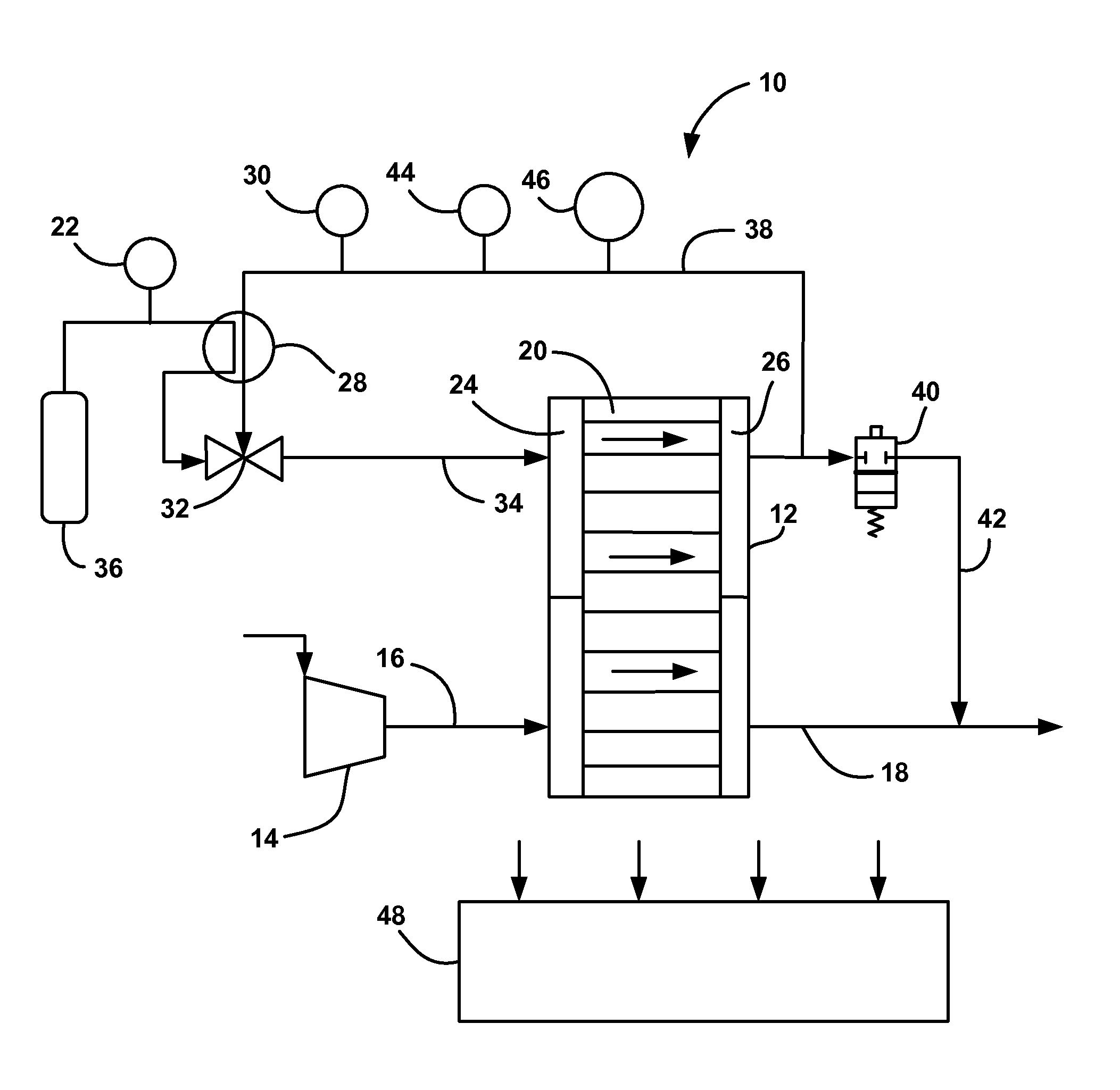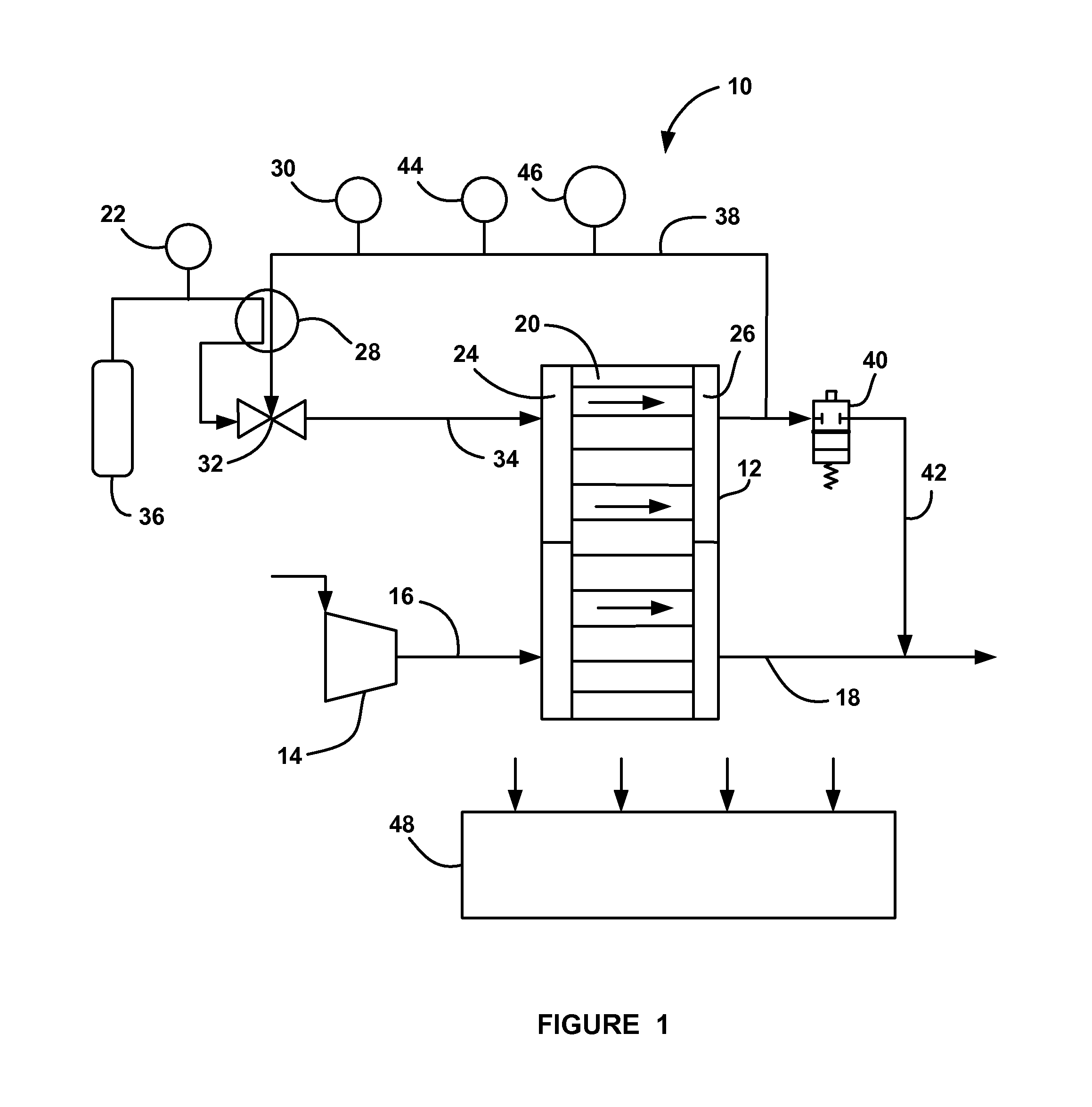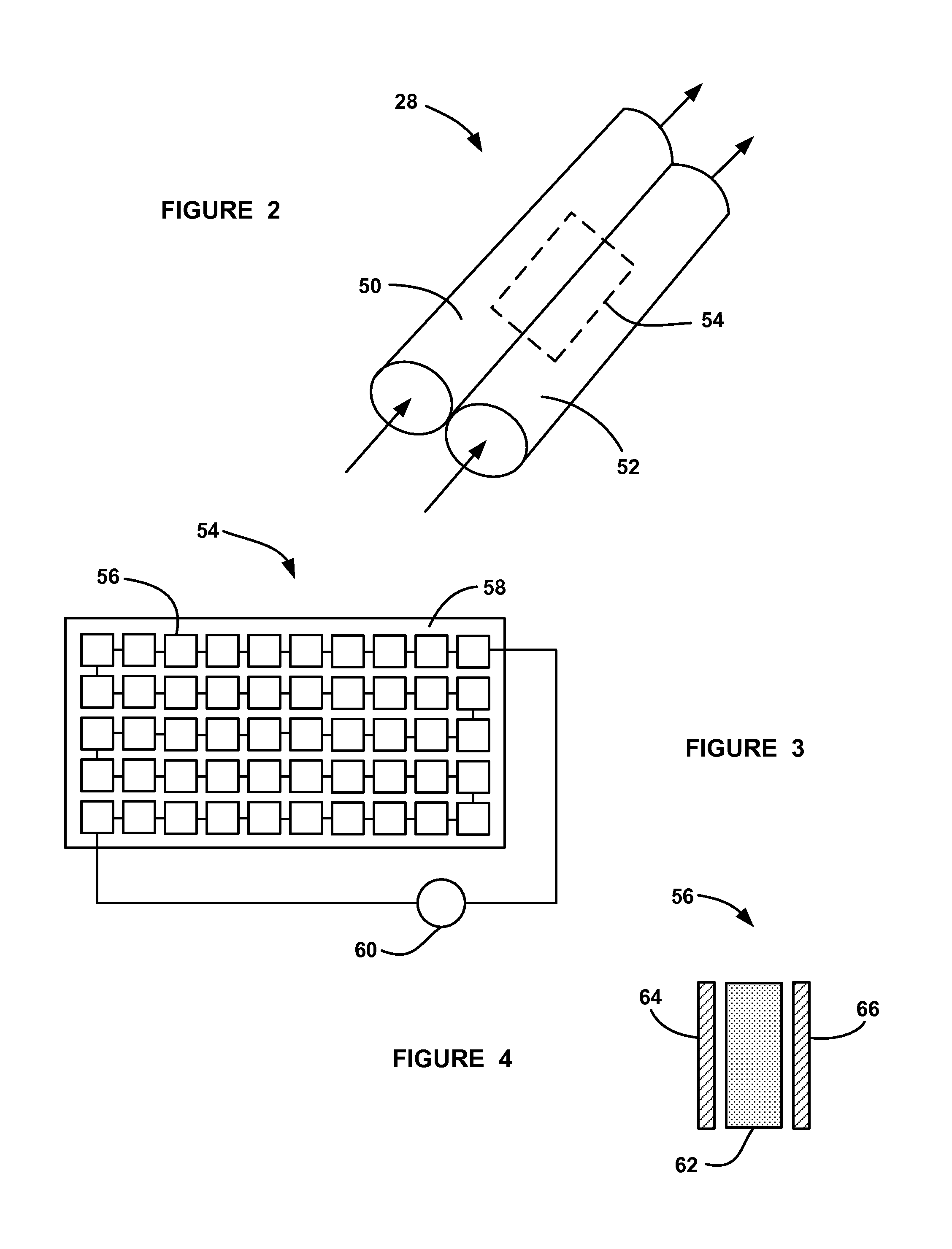Hydrogen concentration sensor utilizing cell voltage resulting from hydrogen partial pressure difference
a technology of hydrogen partial pressure and concentration sensor, which is applied in the direction of instruments, electrochemical generators, material analysis, etc., can solve the problems of fuel cell stack instability, failure, and relatively high manufacturing cost of meas, and achieve the effect of reducing the risk of failure, and increasing the damage of each even
- Summary
- Abstract
- Description
- Claims
- Application Information
AI Technical Summary
Benefits of technology
Problems solved by technology
Method used
Image
Examples
Embodiment Construction
[0023]The following discussion of the embodiments of the invention directed to a hydrogen concentration sensor for a fuel cell system is merely exemplary in nature, and is in no way intended to limit the invention or its applications or uses.
[0024]FIG. 1 is a schematic plan view of a fuel cell system 10 including a fuel cell stack 12 having fuel cells 20. A compressor 14 provides compressed air to the cathode side of the fuel cell stack 12 on a cathode input line 16. A cathode exhaust gas is output from the fuel cell stack 12 on a cathode exhaust gas line 18. An injector 32 injects hydrogen gas from a hydrogen source 36, such as a high pressure tank, into the anode side of the fuel cell stack 12 on an anode input line 34 through an anode inlet manifold 24. The fresh hydrogen from the source 36 is also sent through a hydrogen concentration sensor assembly 28, discussed in detail below. A pressure sensor 22 measures the pressure of the fresh hydrogen gas provided to the injector 32. A...
PUM
| Property | Measurement | Unit |
|---|---|---|
| thickness | aaaaa | aaaaa |
| cell voltage | aaaaa | aaaaa |
| voltage potential | aaaaa | aaaaa |
Abstract
Description
Claims
Application Information
 Login to View More
Login to View More - R&D
- Intellectual Property
- Life Sciences
- Materials
- Tech Scout
- Unparalleled Data Quality
- Higher Quality Content
- 60% Fewer Hallucinations
Browse by: Latest US Patents, China's latest patents, Technical Efficacy Thesaurus, Application Domain, Technology Topic, Popular Technical Reports.
© 2025 PatSnap. All rights reserved.Legal|Privacy policy|Modern Slavery Act Transparency Statement|Sitemap|About US| Contact US: help@patsnap.com



